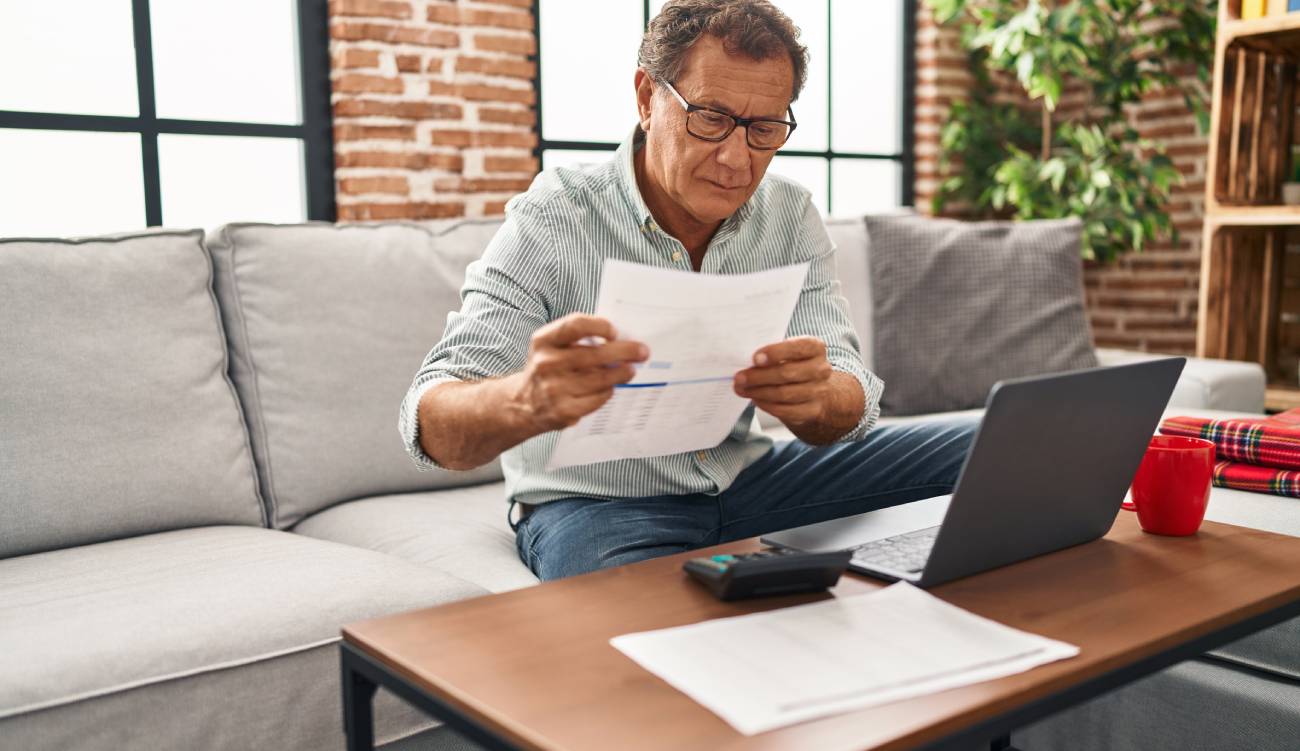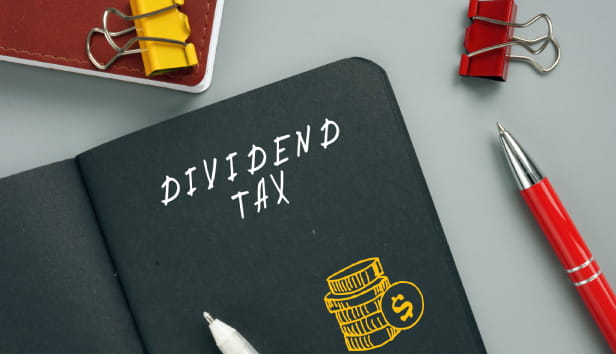

This article is for general guidance only and is not financial or professional advice. Any links are for your own information, and do not constitute any form of recommendation by Saga. You should not solely rely on this information to make any decisions, and consider seeking independent professional advice. All figures and information in this article are correct at the time of publishing, but laws, entitlements, tax treatments and allowances may change in the future.
The number of pensioners paying higher rates of tax has doubled over the last few years and is now above a million, new figures show.
Over the same period the total number of pensioners paying tax on their income at all has also shot up, from 6.7 million in 2021/22 to 8.8 million in the current tax year.
Below, we’ll explain what’s happening and the steps you can take to keep your tax bill down.
What’s on this page?
The pensioner tax figures have been published by pension company LCP, which gained them from a freedom of information request to HMRC.
The steep rise that they reveal in retirees paying tax on their income is mainly because of what’s known as ‘fiscal drag’. This is essentially when tax thresholds do not change to take account of inflation, and is sometimes seen as a ‘stealth tax’.
Income tax thresholds – including the tax free £12,570 personal allowance – have been frozen since 2021, and are due to remain frozen until 2028. In the meantime, pensioners’ incomes have risen, thanks in part to the triple lock, which has been delivering inflation-beating increases to the state pension.
From April next year, the state pension will rise by 4.8% to £12,547.60 a year – just over £20 below the personal allowance. And the state pension will exceed it for the first time from April 2027.
Natasha Etherton, director in financial planning at Evelyn Partners, says: “The income tax thresholds have been frozen since 2021 and so, as the state pension has increased with the triple lock, the full rate has come to take up the vast majority of the personal income tax allowance, meaning any other private income is likely to be taxed at the basic rate at least. Many retirees with substantial defined contribution pension pots or final salary pensions are also being pushed into the higher-rate band for the same reason.”
Etherton says there’s a lot of confusion around how income in retirement is taxed. “We frequently come across clients who think they won’t be paying tax in retirement, or will be taxed at a lower amount, but it’s only the national insurance contributions that stop at age 66 [state pension age], not income tax.”
Similarly, research from Royal London has found that an estimated 21 million people under state pension age don’t know that the state pension is taxable.
The reality is that, NI aside, the tax rules that applied during your working life will still apply once you’ve retired.
James Floyd, managing director at Alltrust (a company that provides admin and trustee services for pensions) says: “Everything except that 25% tax-free lump sum gets added together and taxed as income – state pension, private pension withdrawals, rental income, part-time earnings, the lot.”
In most cases, any income tax you owe on your state pension will be deducted from your private pension withdrawals. This will happen without you having to do anything. Clare Moffat, pensions and tax expert at Royal London, explains: “If your taxable income, including state pension, exceeds the personal allowance and you have another pension, then the easiest way for HMRC to deduct tax is through that pension.”
If you don’t have a private pension, there are other options. Moffat adds: “If you already complete a self-assessment tax return, then you can pay your tax through that. But, if you only have state pension and no other income, and this is over the personal allowance perhaps because you’ve delayed taking it or you have additional state pension, then HMRC will write to you in the summer after the end of the tax year and you’ll have until the end of the following January to pay any tax bill.”
Your savings income could be taxable too – if your interest exceeds the personal savings allowance and it’s not held in an ISA (which shelters your savings from tax).
If you have shares, don’t forget that dividend income can also be taxed above the £500 allowance. Read more about tax on dividends.

If you do end up paying higher-rate tax, it’s important to be aware that you’ll only pay it on the portion of your income that exceeds the threshold (currently £50,270).
But even if you only exceed the threshold by £1, there will be other ramifications that could cause a tax headache.
For example, the personal savings allowance lets you earn £1,000 savings interest tax free. Once you become a higher-rate taxpayer, that allowance is halved to just £500.
Similarly, if you ever need to pay tax on capital gains, the rate you’ll get jumps from 18% to 24% once you become a higher-rate taxpayer.
If your income exceeds £100,000, there’s a further headache. That’s because you’ll also start to lose your personal allowance – creating an effective tax rate of 60% on income between £100,000 and £125,140.
So it can be well worth using the tips below to manage your income tax bill.
There doesn’t seem to be much chance that the tax burden on retirees will ease any time soon, but, if you understand how your income is taxed and plan ahead, there are ways to cut your tax bill.
1. Make sure you know the tax thresholds
If you want to keep your tax bill down, it’s worth becoming familiar with HMRC’s tax thresholds and rates. These are the rates in England, Wales and Northern Ireland:
| Income | Tax rate | Tax band |
|---|---|---|
|
Up to £12,570 |
0% |
Personal allowance |
|
£12,571 to £50,270 |
20% |
Basic rate |
|
£50,271 to £125,140 |
40% |
Higher rate |
|
Over £125,140 |
45% |
Additional rate |
| Income | Tax rate | Tax band |
|---|---|---|
|
Up to £12,570 |
0% |
Personal allowance |
|
£12,571 to £15,397 |
19% |
Basic rate |
|
£15,398 to £27,491 |
20% |
Starter rate |
|
£27,491 to £43,662 |
21% |
Intermediate rate |
|
£43,663 to £75,000 |
42% |
Higher rate |
|
£75,001 to £125,140 |
45% |
Advanced rate |
|
Over £125,140 |
48% |
Top rate |
2. Manage your pension withdrawals carefully
If you’re making withdrawals direct from your pension (rather than using your pension to buy an annuity), how much you take out of your pension and when is up to you.
And, when you’re familiar with all the relevant tax thresholds and rates (see above), it’s possible to structure your income in a way that reduces your tax bill.
Ian Futcher, a financial planner at Quilter, says: “Rather than taking big lump sums, many retirees benefit from using flexible drawdown and taking only what they need. By planning withdrawals to fit within personal allowances and tax bands, you can reduce unnecessary tax and keep more of your money working for you.”
Floyd also suggests you think about timing pension withdrawals too. “Don’t just accept income when it arrives – control when it arrives. If you’ve had a high-income year, defer pension withdrawals until the next tax year if possible. If you’re about to have a low-income year, accelerate income into it. HMRC doesn't care about ‘fairness’ across years – they tax what hits your account in each tax year, so make that work for you.”
3. Use your tax-free cash wisely
You can take 25% of your pension as a tax-free lump sum. But rather than splurging on holidays or putting it in a savings account, you might want to consider using it more strategically. For example, using it top up your income throughout your retirement, without increasing your tax bill or bumping you into a higher-rate tax bracket.
Let’s say your income is currently £40,000, but you’ve got an expensive year coming up and would be more comfortable with £60,000. Instead of taking more money out of your drawdown fund and becoming a higher-rate taxpayer, you could take £20,000 from your tax-free cash instead and remain comfortably in basic rate territory.
Futcher adds: “Using it to pay down debt or to bolster your emergency fund can make good sense, but taking large withdrawals you do not need, could increase your tax burden later. The remaining 75% of your pension is taxable, so taking smaller, regular withdrawals to stay within the basic rate band often leads to a better long-term outcome.”
4. Make the most of ISAs
Any withdrawal you make from an ISA is tax-free. That means ISA withdrawals are another great way of topping up your taxed income without increasing your tax bill or breaching a tax threshold.
5. Work together if you’re married
If you’re married or in a civil partnership, you can also work together to ensure your combined income is as tax-effective as possible.
Futcher says: “Couples have double the allowances, and using them effectively can make a big difference. By spreading income between partners, you can make better use of each personal allowance and reduce the risk of one partner slipping into a higher tax bracket. Simple steps like transferring savings or investments into the lower-earning partner’s name can help reduce the overall household tax bill.”
6. Think about how your finances are structured
Controlling your tax bill isn’t just about planning your income properly. Etherton says it’s important to think about your wider savings and investments.
“If you don’t need extra income, then having a portfolio driving for income, and lots of cash in the bank, will mean you are generating unnecessary income and interest, and therefore could be paying income tax for no reason. Consider cash alternatives such as gilts, or tax-free options such as ISAs and Premium Bonds.”
7. Talk to a professional
If you have multiple sources of income and money spread across lots of different pots, planning your retirement income tax-effectively can be confusing.
But talking to a financial planner may help. They will be able to help you make the most of all the available allowances and put in place a plan that works for you.


It’s one of the biggest retirement decisions you’ll make. Here’s how to get it right.

Find out why savers are acting now & what you should consider before taking your lump sum.

